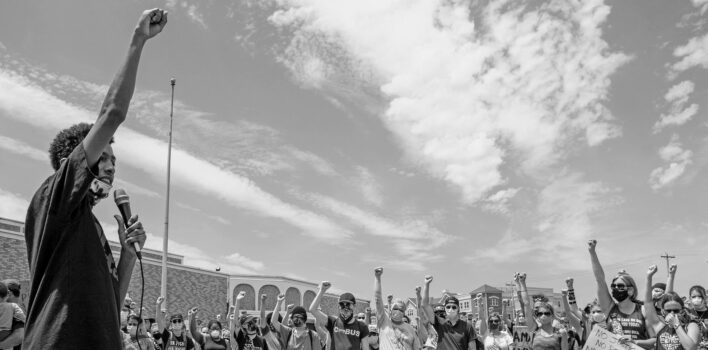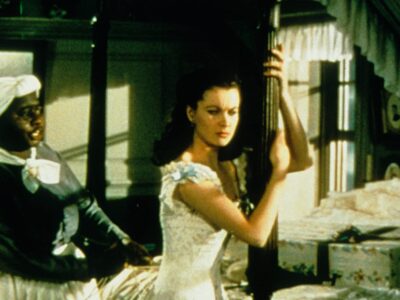Editorial: I’m Learning about Racism
I grew up outside a small, rural town that’s so ordinary and homogenous that there’s actually a documentary about it. I stole a joke from somewhere that “I was twelve before I learned that the name of my town wasn’t ‘Resume Speed,’” but it’s actually called Monrovia, Indiana. It’s pretty tiny.
I still have a special place in my heart for that town, and most of my family still lives there. But there is no getting around it: I had a homogenous childhood. When I lived there, according to census data, there were five non-white people in the entire town. And so not only did I not understand people of color, I did not understand racism. I did not see the Imago Dei fully. I had no idea what to do about that.
I still don’t. But I’m working on it; here’s what I’m learning.
I’m Learning What Racism Means
My daughter is three, and she doesn’t really understand shoes yet. She can put them on just fine, but she always puts them on the wrong feet; and when I tell her so, she often gets very defensive, crying and yelling not about the fact that her shoes are on the wrong feet, but about the fact that I told her about it. But I don’t mean she’s less worthwhile as a person! I still love and cherish her. I still value who she is. And that’s why I want her to learn, so that she won’t hurt herself.
Being called out on racism is similar. Many people don’t understand, and think that the person pointing out racism is implying that they have no worth; but really, having racism identified in your life is like having it pointed out that your shoes are on the wrong feet. Only, if you don’t learn, you won’t hurt yourself, you’ll hurt someone else.
There’s a continuum of racist actions and attitudes; on one end are the obvious things, like cross burnings and lynchings, but at the other end is dismissiveness. “I had it rough, too, so white privilege is a myth” dismisses the very upward battle that people of color have and white people don’t. “All lives matter” dismisses the fact that many black people don’t feel like theirs do. “I don’t see color” dismisses the culture that people of color have in favor of an assumption that whiteness is default.
I’m Learning What Systemic Racism Means
Did you know that the concept of “whiteness” didn’t really exist before American race-based chattel slavery? A “white race” was really only defined by default: we weren’t black, so we were white.
That “default” is the core of what systemic racism is: the assumption of whiteness as the default. It assumes that you’ll be able to navigate a system that was created by white people. It assumes that white people are inherently more trustworthy than black people. It assumes that white people are in charge and must give black people all the rights that God bestowed upon them.
While individual racist actions are often easy to identify, systemic racist actions are far more deeply insidious; but there is both journalistic and statistical evidence for it. Like armed white protestors being allowed to enter government buildings and shout in the faces of police officers without retaliation, but peaceful, unarmed black protestors being forced to disperse with rubber bullets and tear gas. Like black students in schools being three times more likely to be suspended from education than white students for the same infractions. Like black people being pulled over 30% more often than white people.
It’s a big enough problem to be truly disheartening; mostly because God made us all, regardless of color, in His image.
I’m Learning About the Imago Dei
Jemar Tisby, president of The Witness, calls the Imago Dei the subject of the next Protestant Reformation. And it’s not hard to see why: even though it’s considered a core value of our Christian faith, the continued presence of (and obliviousness to) racism within the church is evidence that the doctrine (which says we’re all made in the image of God and thus have inherent worth and value) is not as central as its presence in the first chapter of Genesis might suggest.
To learn about the Imago Dei in others is to learn about God. To disrespect the Imago Dei in others is to disrespect God. To love the Imago Dei in others is to love God. And to kill others is to kill an aspect of the image of God on Earth; an incalculable loss.
It’s not just that people are dying, though the killing of people who bear God’s image is indeed a major part of the disdain for the Imago Dei. More than that, though, respecting God’s image-bearers means passing on Jesus’ message—good news for the poor, liberty to the captives, sight for the blind, freedom to the oppressed—to those who don’t know that it’s the year of the Lord’s favor.
Jesus’ call to those things led Him to the cross, and by the power of the Holy Spirit whom He sent, we have the power to bring that mission about on Earth! The good news for us is the good news for everyone else, too. No one will believe that that’s our mission for eternity if we don’t seek it out here. Even though we won’t succeed on this Earth, that doesn’t mean we aren’t called to work for it nonetheless.
I’m Learning Where To Go From Here
God’s command to the people of Israel was to “seek the welfare of the city where I have sent you into exile, and pray to the Lord on its behalf, for in its welfare you will find your welfare.” I’ve been struggling with how to do that recently, but my black brothers and sisters have been helping me with some resources. Here’s what I’ve been doing to cultivate my love for the Imago Dei in people of color:
- I’ve begun following some Godly theologians of color who will tell me how a racist world has affected them. Thabiti Anyabwile, Michelle Higgins, Jemar Tisby, Ekemini Uwan, Esau McCaulley, Christina Edmondson, and Eric Mason are some good people to look to for a start. I am challenged by many of the things they say, and I don’t agree with all of it. But I am starting to understand more of it.
- I’ve been trying to find ways to be a Christian ally of my brothers and sisters of color. The Witness has a list of resources for allies which is both insightful and challenging.
- I’m learning what it would look like to join a local protest for police reform, and donate to bail or legal funds for people who have been unjustly arrested for engaging in their constitutionally-guaranteed right to peacefully assemble.
- I’m trying to discover more about people like George Floyd, Breonna Taylor, and Ahmaud Arbery, how they died, and how I can help make sure it doesn’t happen again.
But most of all, I’m listening. I want to hear what the people of color I know and trust personally have to say, I don’t want to dismiss them, and I don’t want to ignore them. They have a different image of the same God within them; I want to see it and know it more, because it means better knowing the God whom I love more than anything.
Header image by Paul Becker on Flickr and licensed under a Creative Commons 2.0 Attribution license.







